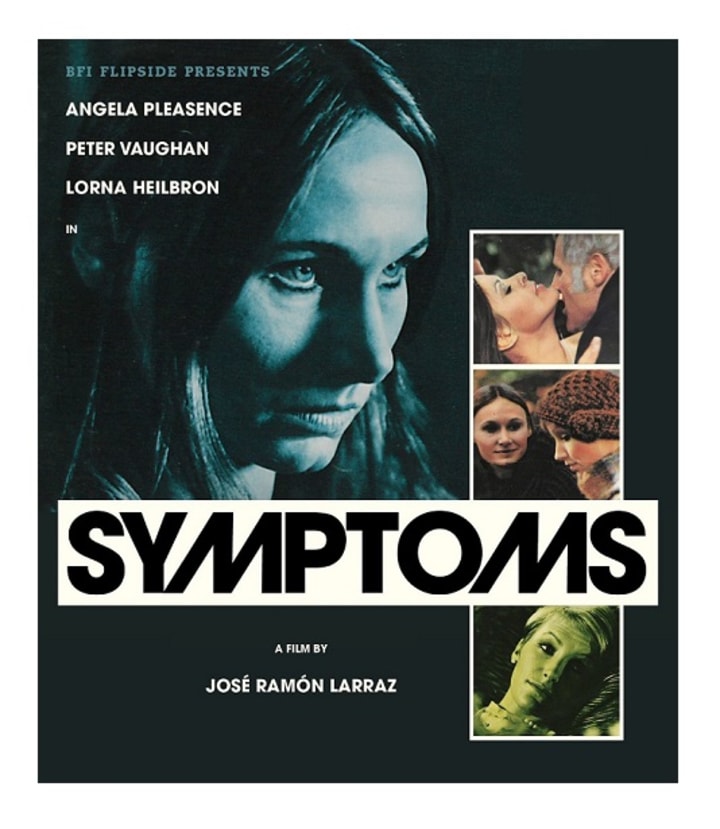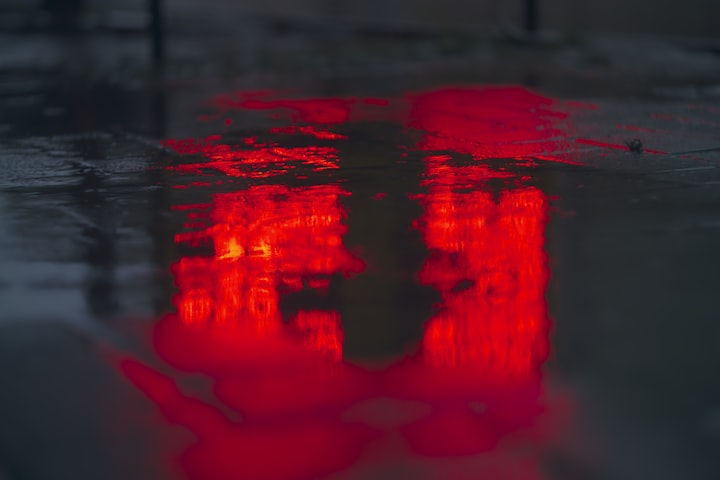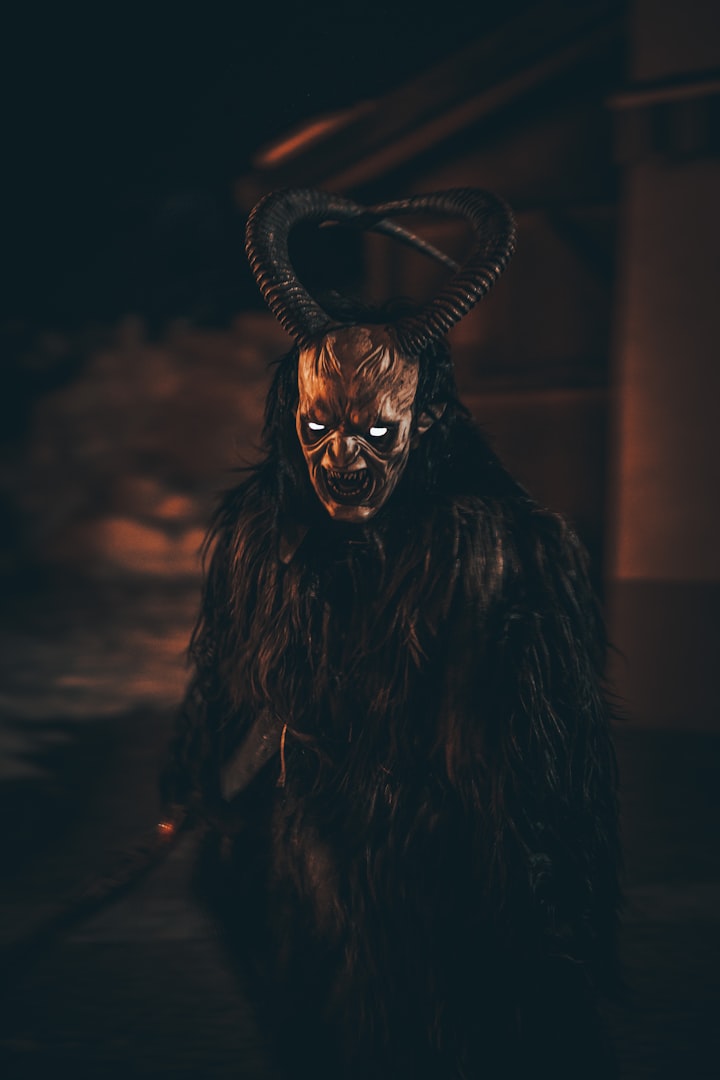Two Horror Films From The 70s That Are Underrated
And that are worth the scares...

I'll just go out and say that I find the 70s to be not only the greatest decades for cinema, but also quite frankly the best decade for horror films, period. Whenever I talk to fellow cinema lovers, they'll generally agree, that is of course if they indulge in that decade as often as I do.
Lately we have seen somewhat of a renaissance with modern horror, the likes of Robert Eggers (The Witch), Ari Aster (Hereditary), Mike Flanagan (Doctor Sleep) and Jordan Peele (Get Out) have been showing audiences of today that there's always been a flame in the genre that can't be put out. That being said, I find that a lot of the films that those directors have been making still owe a huge debt to what 70s horror gave us and that may be in the form of bitter surprise and an unsettling road map into the unknown. And let's not forget social commentary.
Take for instance, Ana Lily Amirpour's excellent A Girl Walks Home at Night Alone, the Iranian vampire horror is riddled in darkness and a strange vibe from start to finish, that vibe though is a concoction of nostalgic overtones. There's literally a scene early on in the film where the main character, a young man, goes upstairs to repair a beautiful woman's television set, the scene is soaked in tension and could of gone to an obvious place. If it were made in the 90s, it would have. In this case, it doesn't, instead all the psychological aspects of the scene are absorbed and placed into subtle character development over the course of the film. Much like the horror of the 70s there's simply a lot more going on than the terror at hand, it's not about the scares, instead it's all about the humanity or even the lack thereof in the moments.
Texas Chainsaw Massacre isn't about crazy hillbillies in the middle of nowhere butchering folks up; It's really about a nice group of kids, being brutally killed by the very same people who's rights they would defend in a protest. Plus it's also about meat and animal treatment and the reverse engineering of the process. The scene where one of the victims gets thrust onto a meat hook pretty much suggests this theory without words.

70s horror also brings with it a certain feel and texture, perhaps the fact that it was shot on 16mm and/or 35mm film and with lenses that looked like they were smeared with grease only intensifies the experience. Lately, I've been digging through the archives and really trying to see if there's a 70s horror I could praise, and I really wanted to bring up The Exorcist, but I think just about any film fan already knows how William Friedkins excelled horror changed the game and there's many excellent write ups on it such as this one from Cinephilia and Beyond.
So I re-watched some oldies and guess what, I actually found some little darlings that I think could give Exorcist and Chainsaw a little run for their pea soup vomit and human cuts. At least the two that I think should be talked about a little more.
1. Let's Scare Jessica To Death (1971)

I'll first start off with this little film from 1971, released two years before The Exorcist, it's a pretty eerie experience I have to say. Consider this; you had Robert Wise's The Haunting released six years prior. By today's, standards Wise's atmospheric black and white marvel doesn't really hold up with the frightening element. Perhaps it doesn't now because of the Warner Westerix Mono track which isn't that moving in an age of headphone wearing, mobile device watching viewers. Anyway, horror was still very much in the tone of gothic Hammer House pieces at the time overall, the concept of independent horror was getting explored here and there with Romero's Night of The Living Dead and the such. Then came in 71, Let's Scare Jessica To Death.
John Hancock made his debut with this film on a budget of 250,000 dollars and originally the film was written as a sort of boogie monster satire, however Hancock said he would only direct the film if he could add his own elements to it, as a result the film was re-written as a dark and gloomy picture. Here's a quote from Hancock himself.
"I made it eminently clear to [the producers] that I did not want to do a satire of a horror picture. I wanted to do a movie that was legitimately terrifying."
And that's exactly what you get. Jessica (Zohra Lampert), the title character of the film has just been released from a mental institute, she and her caring husband head on down to a secluded homestead on an island in upstate New York. When they arrive there, there is a mysterious girl and drifter called Emily (Mariclare Costello) who joins them. Jessica takes a liking to her and before long they become friends and things just get weird. And this film does scare indeed, but on a level that really plays with your head.

There are jump scares at the start, and one particular scene may very well be one of the first ever ''around the corner'' shocks done on screen. Think Mulholland Drive, you know the scene behind Winkie's? Well there's a scene that's exactly like that in Let's Scare Jessica To Death. I reckon David Lynch loves this film actually.
It almost seems as if the lenses of this film are caked in some sort of mist or grease, you can hardly make out any soft details in certain shots, not to mention that most of it takes place during daytime. Lampert's beauty is most definitely eye catching, that aside, her insanity and unreliable narration as Jessica will drive you into the funny farm making you question everything you've heard since it began.

Many scholars have compared the story to Sheridan Le Fanu's Camille. On the other hand it is considered to be a faint commentary on the end of hippie values. According to biographer Michael Doyle in a study, he mentioned that it too anticipates the "festering paranoia" that occurred throughout the 1970s, with the Watergate scandal, assassinations of Harvey Milk and George Moscone, and the Jonestown massacre.

Like all good horror there is some sort of social commentary in it. I'll further add, Let's Scare Jessica To Death arrived at a period in Hollywood where things were changing drastically and whilst the decade offered a phenomenal list of scares, this one is the more thought provoking of the bunch and worth seeing a few times.

2. Symptoms (1974)

This brings me to this other horror film from 1974, released a year after The Exorcist scared the living daylights out of the world and the same year that Tobe Hooper's Texas Chainsaw Massacre killed its way onto the circuit. Symptoms is a British film, and not from the country's legendary Hammer outfit but instead from Bryanston Pictures. The film was considered lost for a while but was circulated through dodgy bootlegs over the decades, that being said, only recently in 2016 did BFI piece it together and release a defined print. That 'lost film' feel only adds to the atmosphere.
So what's Symptoms about? Quite frankly speaking, it's a very familiar plot that's often used, especially in low budget production, The Turning of The Screw inspired story of a person or persons heading out to a quiet retreat only to be turned psychotic by the unseen and themselves. Yeah, so basically The Shining and the film I just ranted on about, Let's Scare Jessica To Death. It was recently done well with a little indie I saw at Aesthetica 2018 called Retreat by Tom Nicoll, definitely worth checking out.
That being said, it's not plot that really counts. It's character and in the case of filmmaking how elements such as image and sound are merging together. And that's where this story shines, I watched this on a good weekday evening and I really got the chills. The film's main protagonist is Helen (played by Angela Pleasance), a recluse who invites her friend Anne (Lorna Heilbron)to stay over at her family estate in the woods in the middle of nowhere. What follows is a series of strange events.

If you liked The Others, then this pretty much is a precursor to that. There are plenty of jump scares in here, and some may not have an effect. What does make your skin crawl in here is, similar to Let's Scare Jessica To Death, is that we're losing it a little like our main protagonist. There is also a sort of Freudian aspect thrown in to twist the knife further. There is a masturbation scene in the film involving Helen, and one can think of Black Swan when watching this, except with the dark and foggy texture of this production it just feels eerie.
The making of Symptoms, like many films, wasn't without its own behind the scenes problems. Director Jose Ramon Larraz was apparently very demanding and controlling on set, Angela Pleasance was also working long hours on set and stated that she would "get up at four in the morning, and not be home before eleven at night,". There was also the case of an overhead light that fell on Pleasance's head while filming, thankfully she survived. Larraz would also withhold pages of the script from Lorna Heilbron (who plays Anne) until she was deep into filming the project.

These drastic creative decisions, coupled together with what sounded like a hellish production could give Friedkin's Exorcist production a run for the money. Strangely, it seemed for better or worse, to infuse the final tone and feel of Symptoms. As a result, it made it a strenuous and creepy under seen film.

At times, Symptoms does feel slow but that's kind of what you want with this kind of sub genre of horror, if you can watch the restored print of it you'll also appreciate the textures and sounds. The visuals are very nice, it's heavy on the grain and there's a haziness that only makes it feel more and more like a bad dream.
WHAT ELSE CAN I SAY...
The best horror in my opinion is the one that's really going to make me sleep with the light on, when I watch a slasher that doesn't happen, in many ways slasher films are good fun for me. However, once we start dealing with spirits and things that aren't quite explainable, that's when I get thinking. Much of the great books and films of horror tend to work on the elements we can't easily understand, they go beyond basic consciousness. Whether it's Henry James' Turn of The Screw or a film like The Changeling. We don't need to always see, we just need to feel.

About the Creator
Michael Couvaras
Michael Couvaras was obsessed with cinema from an early age. Born in Zambia, he now finds himself in London in his twenties making independent films, music videos and commercials. When he's not doing that, he is writing articles on cinema.






Comments
There are no comments for this story
Be the first to respond and start the conversation.